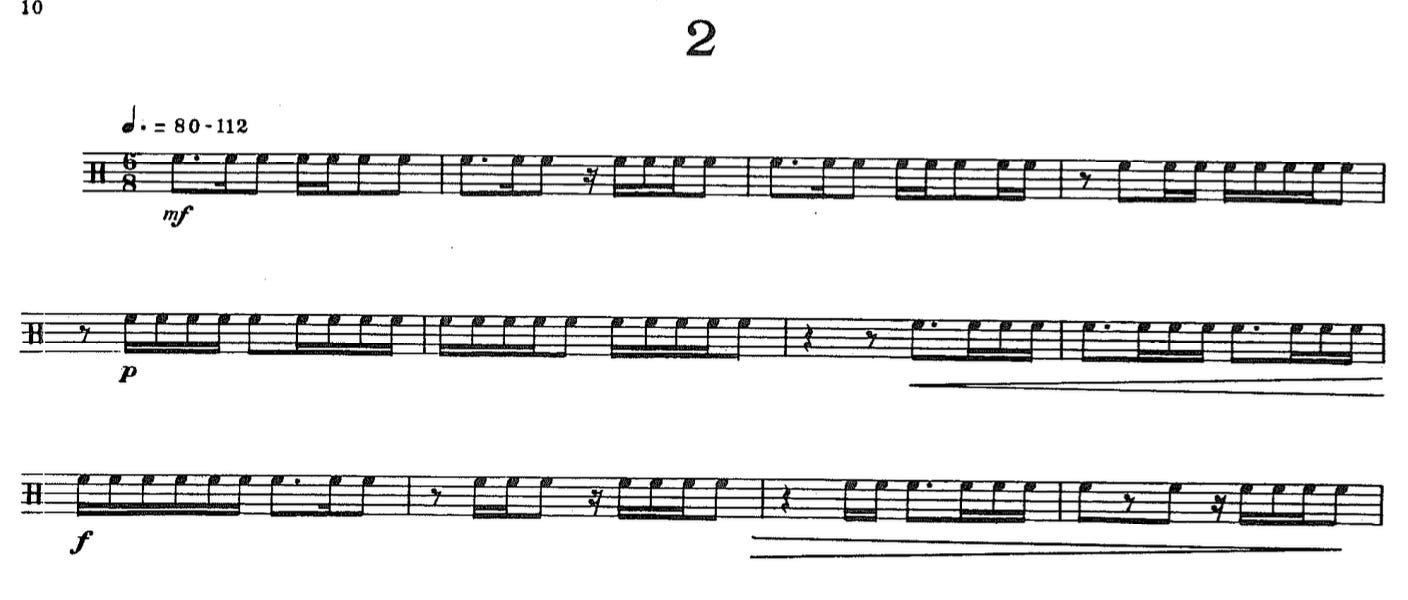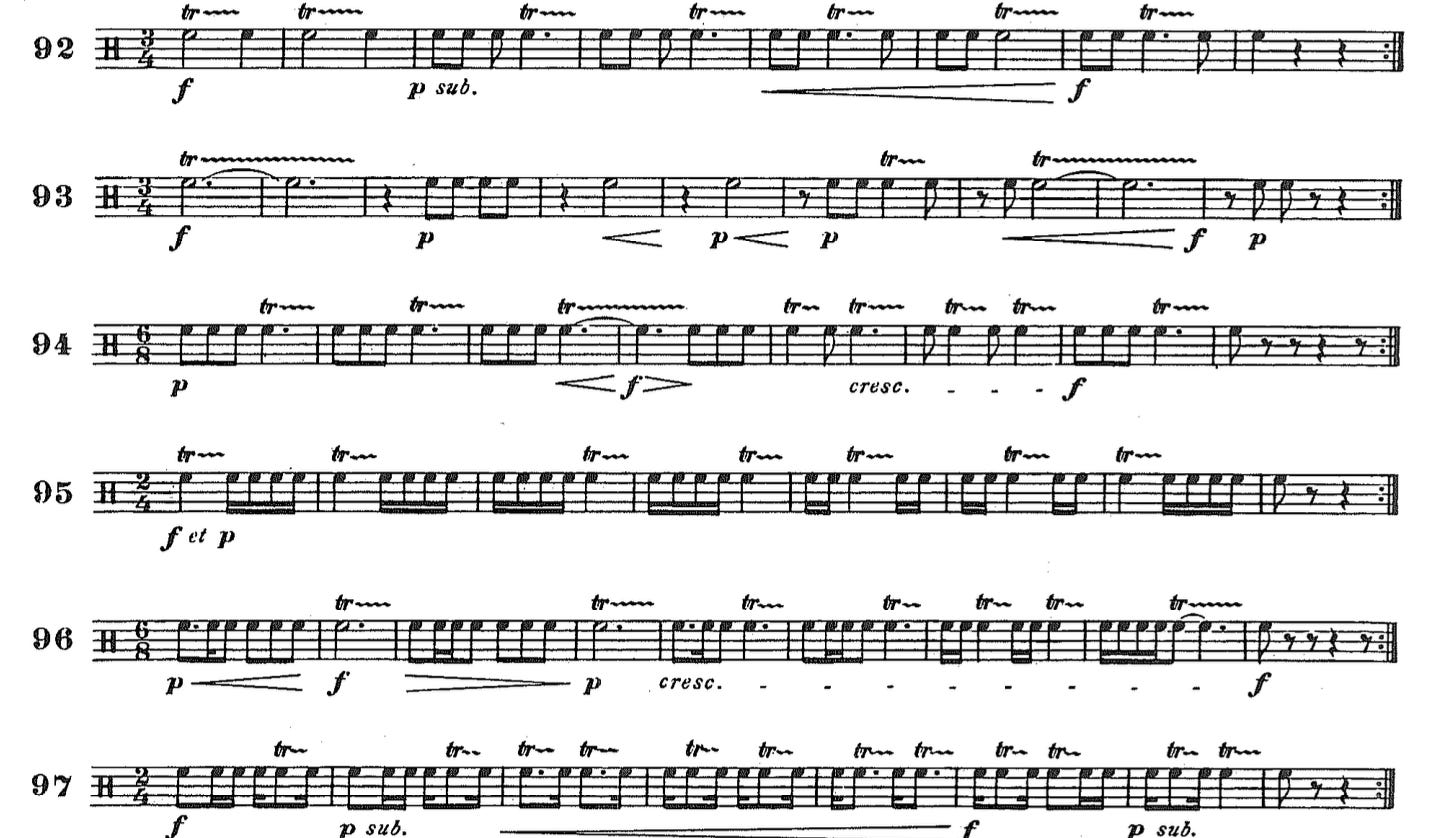This week: how I practice Delécluse's snare drum music. Or rather, how I warm up to practice Delécluse's snare drum music.
Consider Style and Performance Context
Most percussionists study Delécluse’s études at some point. Unfortunately, many percussionists consider Delécluse’s études in a vacuum, looking at only this one volume instead of considering his music. Likewise, many percussionists bring to these pieces their own pedagogical background, which is generally a mix of orchestral and rudimental techniques in the American tradition. My argument is that approaching Delécluse’s music this way does it a disservice, and creates more questions than answers within the musical text. Here’s another way.
We want to be as efficient as possible in the practice room, so we need to make sure that we’re warming up and developing technically towards our interpretive goals. So, what SHOULD Delécluse’s music sound like??
Framing
First, frame Delécluse’s style. His music is dynamic, vivacious, colorful, of a type with Jolivet, Poulenc, and others. Delécluse’s work is suffused with melody. It stands to reason, as he was a pianist in one of the major European orchestras. His music is inspired by 19th and 20th century orchestral music, and uses the inflections colors . It’s music that expects the performer to bring an interpretive idea to the table.
As we’re warming up, we can prioritize these sound qualities and melodic rhythmic inflections, including them in every part of our warm up. These ideas could include:
Rhythmic hierarchy
Inflection of rolls
Inflection of meter
Style of accents and ornaments
Color and manipulation of timbre and shading
Interpretation: more soloistic, more dynamic, less flat
Instrument: colorful, bright, snappy
We’ll draw upon Delécluse’s Méthode de Caisse-Claire. I love using composer’s method books and reading their treatises because they give us a window into their musical priorities. Delécluse’s various method books, which he wrote for many percussion instruments, are a treasure trove of information about he believes percussionists can and should be played. Overall, they posit a type of playing where technique is in service of melody and phrase
Reminder
As a reminder, I warm up on the snare drum by playing around with 5 categories of music and technique:
Mind, Torso, Shoulder, Arm, Wrist, Finger, et. al. (10-15 minutes)
Grouping Notes: Rebounds, Forwards and Backwards (5-10 minutes)
Inverted Doubles (5-10 minutes)
Bounces (5-10 minutes)
ALMOST Repertoire (10-15 minutes)
With that in mind, let’s re-contextualize:
Mind, Torso, Shoulder, Arm, Wrist, Finger, et. al. (10-15 minutes)
Begin with easy exercises. How about some from Delécluse himself?
I play around with these, adjusting dynamics, inflection, sound color, and style. This is the first section of Delécluse’s method, and we’re already past RRRRRRR.
💡 Never stop playing, and never stop changing. I try not to waste time on instrument with rests and mindless repetition.
We’re going to have to play this…
Take these rhythms, isolate a few beats, and play around with them. In fact, Delécluse does this for us later in his Méthode:
Or, if I’m feeling spicy:
Note that these “easy” exercises are full of life. Shouldn’t we play Delécluse’s music that way, if his pedagogical work is pointing us towards that kind of approach?
Grouping Notes: Rebounds, Forwards and Backwards (5-10 minutes)
Back to this example:
I would NOT alternate in this passage, so let’s look for some ways to practice this section without practicing this section.
These lines are from Guy Lefèvre, but they could help:
Work on playing these accents as inflections, using the weight of the arm to create a constantly moving phrase instead of thinking of a two-height texture. Improvise, improvise!
Inverted Doubles (5-10 minutes)
Last week I shared an exercise from Stone’s Accents and Rebounds:
This is a great way to build strength in inverted doubles. But, in Delécluse’s music, we need to be able to play with a light, maneuverable style. Take a look at how Delécluse first introduces rebounds:
Suave! Play around with these, working hard to clarify the meter in the 2nd line.
Bounces (5-10 minutes)
Double, triple strokes, and “multiple bounces” are basically the same to me in practice. Sometimes executed with the wrist, sometimes performed with the arms, sometimes assisted with the fingers, sometimes not. In general, the wrist is more prominent in double strokes and slower, and the arm more prevalent in triple strokes and faster.
💡 In Delécluse, we need to be able to have a fine control of our shading—no two rolls should be performed identically
Seek to produce a “string of pearls,” a term French percussionists use to describe a roll somewhere between a double and triple stroke.
Here’s a sequence of exercises from the Méthode. Play them as attacks (no rolls), double strokes, triple strokes, then be naughty and play buzzes:
Grace Notes (5-10 minutes)
I didn’t include grace notes 2 weeks ago, but they are a vital component of this style of music.
My approach: Play grace notes like other notes.
They don’t need to be super soft. Non-percussionists don’t play this way, and I don’t think, from my study of Delécluse’s work, that he intended grace notes to be uniformly soft. As such, work to play them melodically. A 3 stroke ruff should not be 3 even notes followed by one louder note…
Here are some gnarly ones to chew on:
This étude is similar to No. 1. Hover on it for a while, playing just the first few bars, playing a whole line, omitting the grace notes, or otherwise modifying the music. Play at tempo, subtracting elements as necessary: it’s more important to feel the meter than to play all the grace notes. Then, consider “promoting” some grace notes, playing them as rhythms. In m. 1, try playing beat 3 as 2 16th notes instead of an 8th note with a grace note
ALMOST Repertoire (10-15 minutes)
Now, let’s do some Delécluse-that’s-not-No.-1. Good thing his method book includes JUST the thing: Exercisces Recapitulatifs. This one is more difficult than étude 1 of the Douze Études, so mastering it would make the repertoire at hand easier.
Then, and only then, do I take on Étude No. 1.
Notice
I didn't think about stickings. Those come later, and could be intuited from the musical text, French performance traditions, and our own skills.
Most Wanted List
Now, I draw upon my list of challenging passages in étude 1, isolating them and practicing Deliberately to hone my mental representation. But that’s crossing the line between warming up and practicing.
Time’s up!
Let me know what you think, and see you next time!















